Visual merchandising is one of those design disciplines that benefit both retailers AND fashion designers, alike. Whether you have your own brand and are lucky enough to afford your own retail store, OR you’re a brand who plans on selling to retail stores, our 9-part visual merchandising series provides valuable information to help you succeed. Visual merchandising is the very plan to use to communicate to the customer what the brand is all about.
Fashion designers benefit from the study of visual merchandising because it helps them understand the mind of the retailer, especially as the retailer plans their retail open-to-buy for a particular season. This blog post will provide you with a taste of what you’ll learn by viewing our 9-part visual merchandising series taught by Marcie Cooperman (author of Color: How to Use It) and who has been teaching this topic at UoF and at Parsons for years. Sit back and enjoy… get the popcorn popping!
University of Fashion’s 9-part Visual Merchandising video series (Photo images: University of Fashion videos)
The Psychology of Visual Merchandising
So, it all starts outside the store, with the entrance and store windows. You’re walking by, and suddenly you see a terrific display window that makes you stop and look. What did the trick?
Maybe it was the perfect dress or coat that you’d been thinking you need to find. Or… maybe it was the colors in the display, or something fun about it. Or maybe, it was even a sale sign. If it made you decide to go inside, that’s a successful display window.
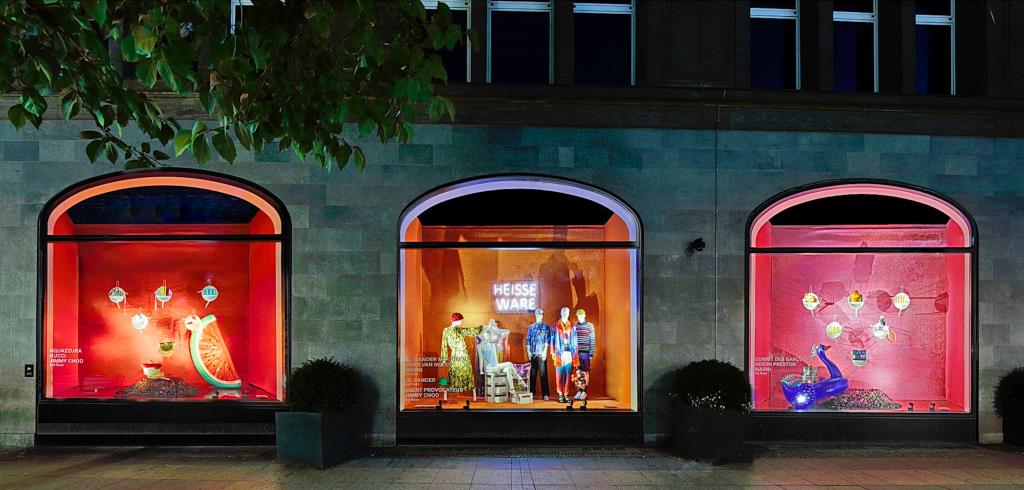
Examples of colorful & eye-catching store windows (Photo excerpt: University of Fashion video)
And, when we walk into a store, we usually know within about three seconds whether we want to stay there and shop, or whether we just want to turn and leave. We know right away whether we are going to find something we like, or whether it’s going to be a waste of time. It’s all about the store’s interior design. Does it look organized, so that we might feel confident about moving around easily without asking for help? Or is it a messy store where we are not clear on how to find things?
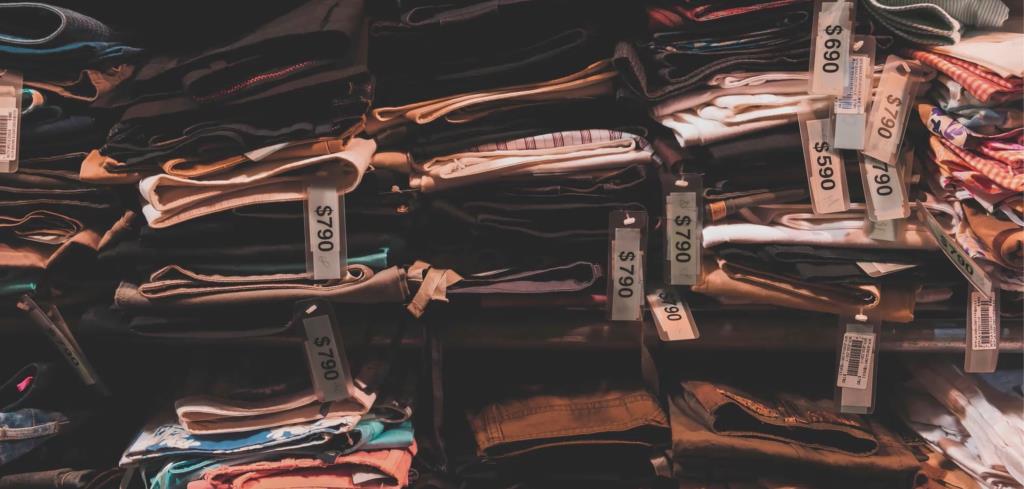
Example of a messy & uninviting in-store display (Photo excerpt: University of Fashion video)
In retail visual merchandising, there are two essential parts of the store interior to think about: merchandising presentation and visual merchandising. Although they work together, they are actually two different activities. To keep the store fresh, both elements should be updated frequently. That encourages customers to come back to the store often to see what’s new.
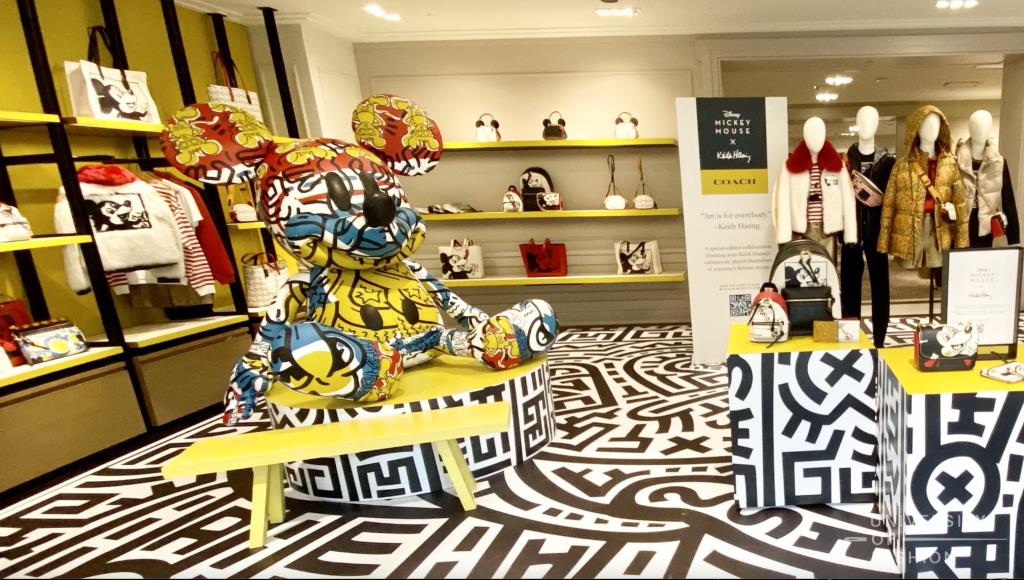
Example of an interesting, in-store thematic merchandising presentation and visual display (Photo excerpt: University of Fashion video)
The Planogram
In-store visual merchandising begins with the planogram. The planogram is a detailed set of drawings of a store with two main goals: to plan the use of the space, and to make decisions on where to place all the merchandise.
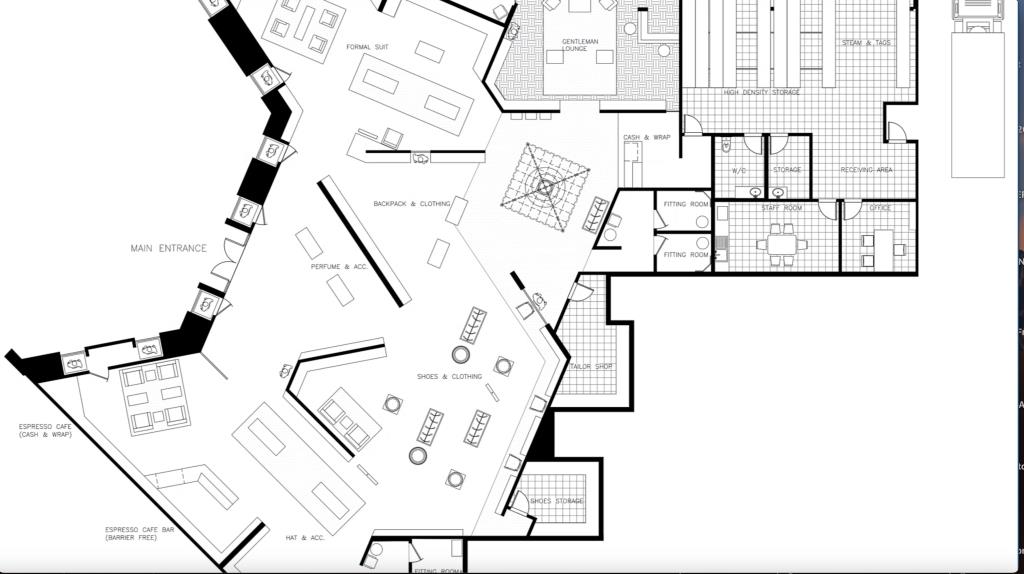
Example of a store planogram (Photo excerpt: University of Fashion video)
Using Color & Texture plus Graphics & Signage in Visual Merchandising
For starters, and to really understand the power of color, view our lessons entitled: Color Relationships and Color Theory-The Basics.
Color and texture are critical tools to use in visual merchandising, because when you put wonderful colors and textures together in a display, it sends customers the feeling that this brand is organized and beautiful. That makes the customer feel positive about the brand and makes her want to shop there.
Visual merchandisers like to use textures that contrast with the merchandise, because they highlight the qualities of the products, and help customers see them.
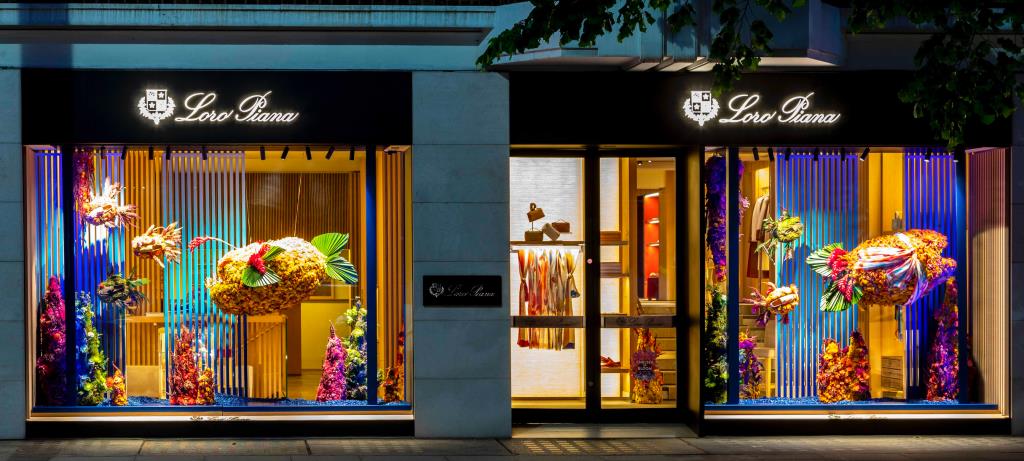
The successful use of color and texture in store windows. (Photo excerpt: University of Fashion video)
Using Line, Shape & Balance in Visual Merchandising
Lines and shapes are the basic building blocks that visual merchandisers use in putting together a merchandising display. We see them on tabletop displays, on walls, and in display windows. Lines and shapes can be created by clothing on mannequins and on garments hanging on racks or walls, and they can even come from the shelves and the store furniture.
Balance means that every line and shape of the display works to support the whole display, and every part is integral to the entire display. We must be able to look around the entire display, and all the lines will keep leading our eye back to the central focal point.
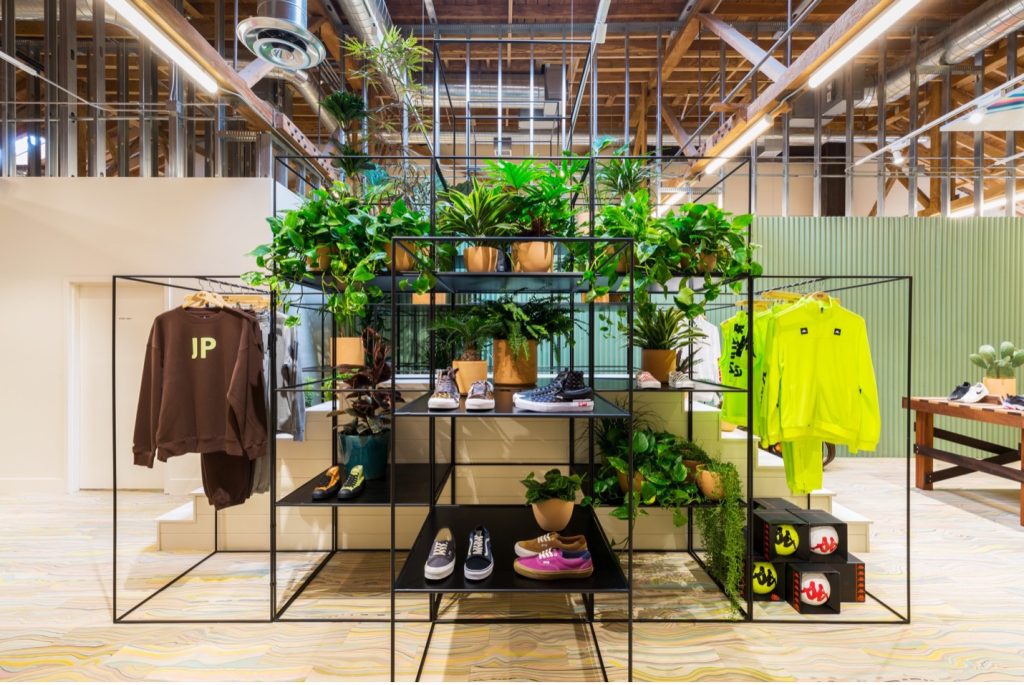
The use of line and shape in visual merchandising (Photo excerpt: University of Fashion video)
We hope you’ve enjoyed this little snippet of what you’ll learn as you make your way through our visual merchandising series. With over 5 hours-worth of instruction, and hundreds of store display images, you are sure to be inspired and enlightened on the role of the visual merchandiser. Heck, it may even encourage you to want to pursue it as a career!
Do you know what’s the biggest selling color in fashion, and one that you’ll almost never see an entire store window devoted to and why?
-------------------------------------
By: Francesca Sterlacci
Title: What is a Visual Merchandiser & Why Should I Care?
Sourced From: www.universityoffashion.com/blog/what-is-a-visual-merchandiser-why-should-i-care/
Published Date: Sat, 27 Jan 2024 00:26:22 +0000
Read More
Did you miss our previous article...
https://edmmusic.news/fashion-clothing/the-power-of-the-color
 FestivalsMusicNew ReleasesArtistsFashion & ClothingVideosPrivacy PolicyTerms And Conditions
FestivalsMusicNew ReleasesArtistsFashion & ClothingVideosPrivacy PolicyTerms And Conditions
